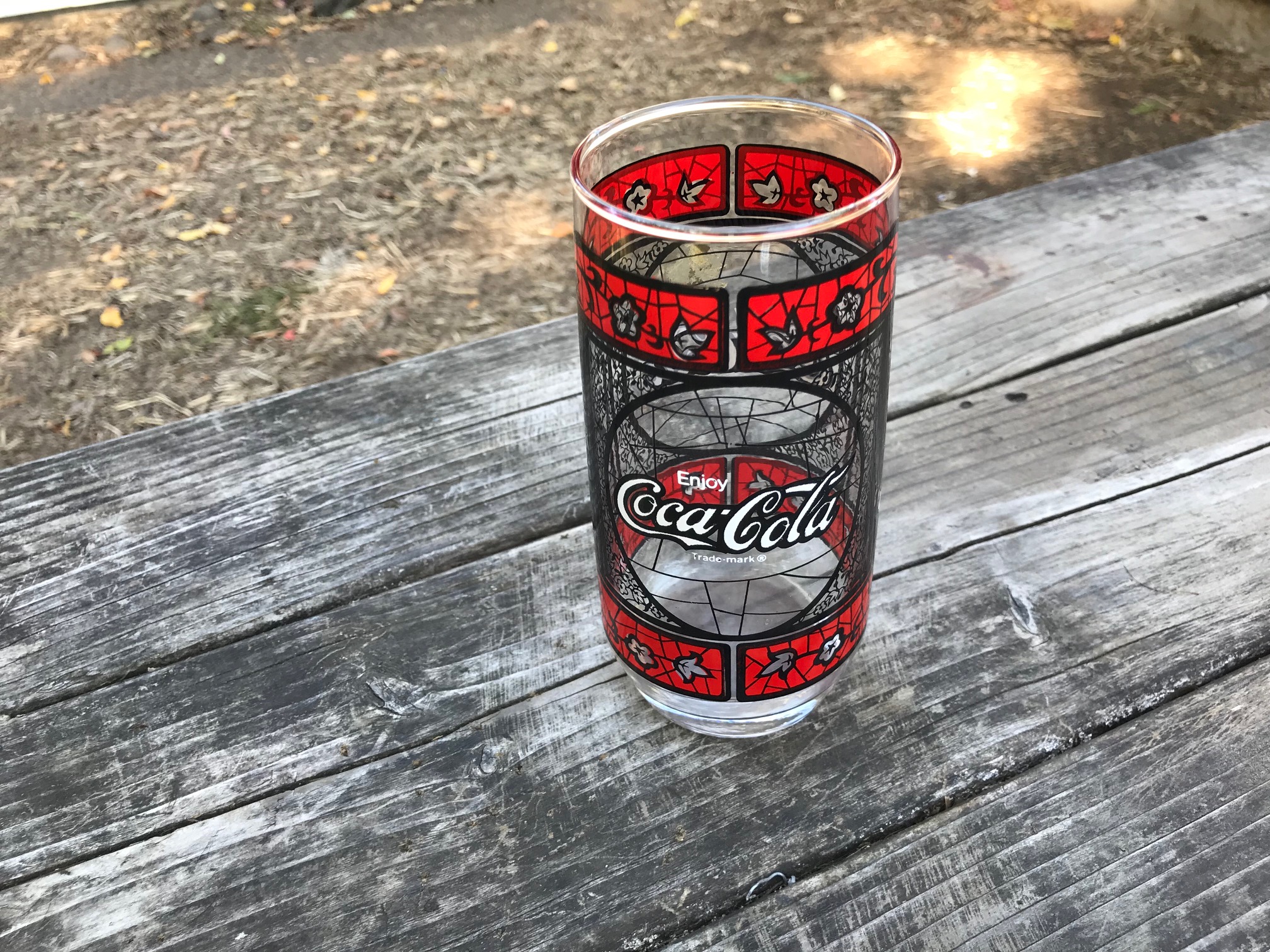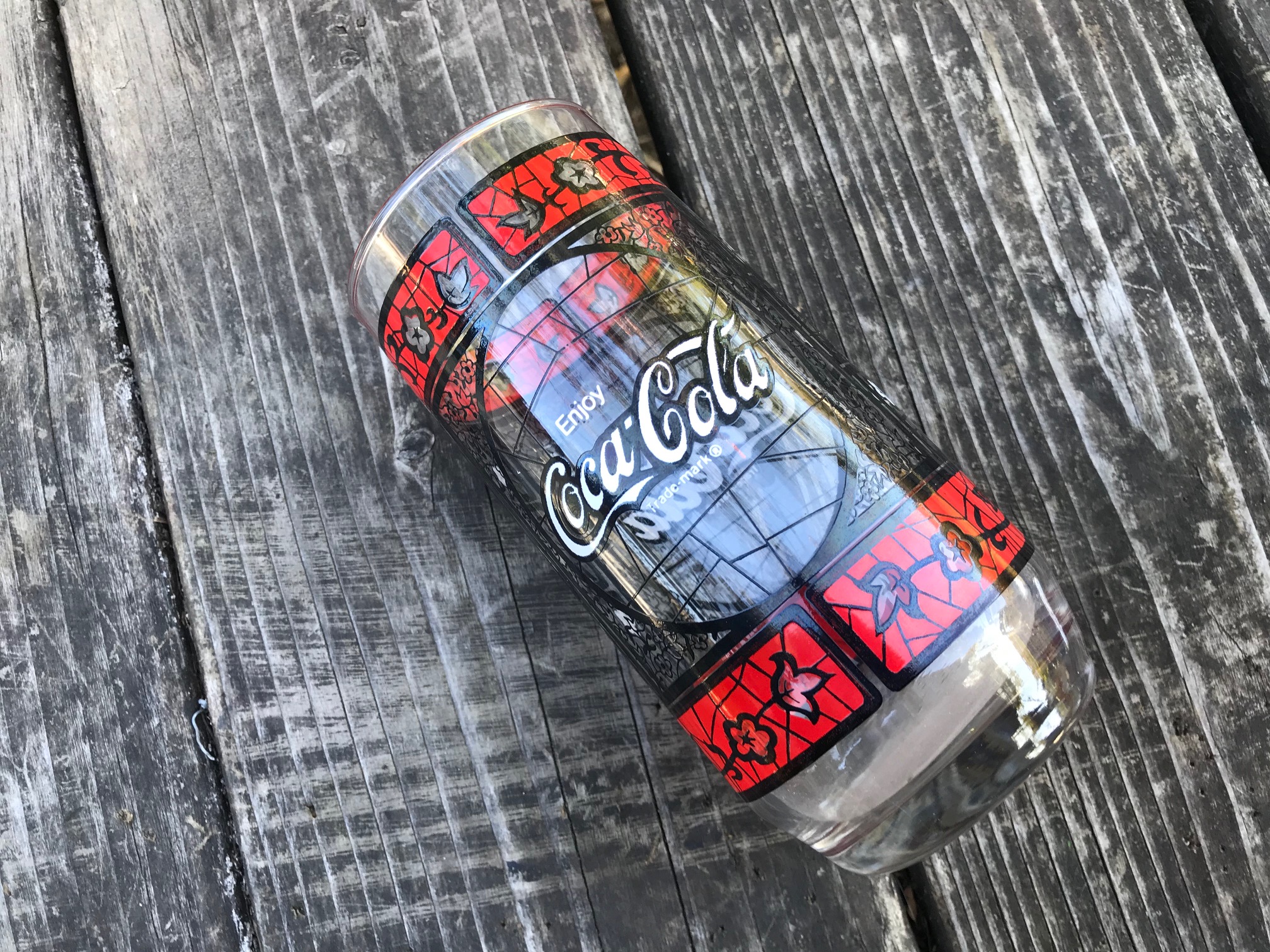Vintage Coca-Cola Glass: 74,200 ppm Lead (a neurotoxin toxic at 90 ppm+) & 3,023 ppm Cadmium (a carcinogen toxic at 40 ppm+)

In newly-manufactured items that are “intended for use by children” today, 90 ppm Lead (or higher) is considered illegal in the paint, glaze or coating; 100 ppm Lead (or higher) is considered illegal in the base substrate. In addition to testing positive for a very high level of Lead, the commemorative Coca-Cola glass pictured here also tested positive for unsafe levels of Cadmium (Cd) in the paint on the outside. There is currently no Federal regulatory limit or standard for total XRF-detectable Cadmium in dishware in the United States. Cadmium is considered illegal in consumer goods in the country of Denmark at levels of 75 ppm or higher; in the U.S., the State of Washington has a consumer goods Cadmium limit of 40 ppm. To read more about the concerns for Cadmium in consumer goods, click here.
Below are the exact XRF readings for this glass.
This is the reading set for a 60-second XRF test on just the red part of the design. All of the colors of the paint (red, white and black) on the glass were tested – and the red had the highest reading (although the other readings were within 10,000 or 20,000 ppm of the reading below). The XRF test results reported on this blog are science-based, and replicable.
-
-
- Lead (Pb): 74,200 +/- 2,500 ppm
- Cadmium (Cd): 3,023 +/- 185 ppm
- Chromium (Cr): 3,2147 +/- 192 ppm
- Selenium (Se): 766 +/- 80 ppm
- Copper (Cu): 509 +/- 82 ppm
- Iron (Fe): 4,445 +/- 396 ppm
- Titanium (Ti): 1,709 +/- 158 ppm
- Cobalt (Co): 3,656 +/- 302 ppm
-
Some people might say that “Well – it’s only on the outside of the glass — you are not drinking Lead” – or “The Lead doesn’t touch the contents of the glass.” The fact of the matter is that it only takes a literally microscopic amount of Lead in dust to poison a human [or pet] and that all forms of Lead have the potential to have impacts on biological structures (there is no “safe” type or use of Lead in the home). Here is a good post that describes how much Lead in dust is toxic.
If you have any of these types of glasses (vintage glasses with painted characters or designs) in your home, you are likely familiar with the fact that the paint wears over time and with use – as is clearly evident when colors fade and parts of images disappear. So for me, the concern is about “where do those micro-particles of Lead go as the decorative elements of the glass wear?” – with the answer being fairly obvious: into your kitchen – into your sink, your dishwasher, your cabinets – and even potentially on to your hands or into the food you prepare in your kitchen.
While this has not been widely studied (in terms of the greater long-term implications) it has been studied to some degree and you can read about one such study here at this link.
Takeaway:
While I would never keep items like this in my home, if you MUST keep them (for some sentimental reason) please consider keeping items like these in a locked curio-cabinet, behind glass. Please do NOT let children in your life handle or use them. I personally would not use something like this in my home for any purpose (especially for food-use purposes.)
If you are interested in participating in the testing I do, click here to learn more about it.
As always, thank you for reading and for sharing my posts.
Please let me know if you have any questions.
Tamara Rubin
#LeadSafeMama

Never Miss an Important Article Again!
Join our Email List



The other readings (white black) were within 10,000 or 20,000 ppm for !lead! (only) I assume? If it’s those two exact values that are not reported why not in your next edit replace 10 and 20k w them and footnote the +- offsets or, footnote the lot of numbers. Doing so adds value? to your article:) Pete
We had these glasses for years. I was wondering what happens if poisoned by the lead. Could it lead to brain cancer
Hi Dawn,
Lead impacts all biological functions and can cause a compromised immune system – among other health impacts. If one has a compromised immune system from Lead exposure it is more likely for other diseases – like cancer – to take hold and thrive (unfortunately.) The American Cancer Society has stopped a little short of declaring it a known carcinogen however the European regulatory agencies have classified it as a carcinogen.
Tamara
“The U.S. Environmental Protection Agency (EPA) has classified lead as a probable human carcinogen.”
https://www.atsdr.cdc.gov/toxfaqs/tfacts13.pdf